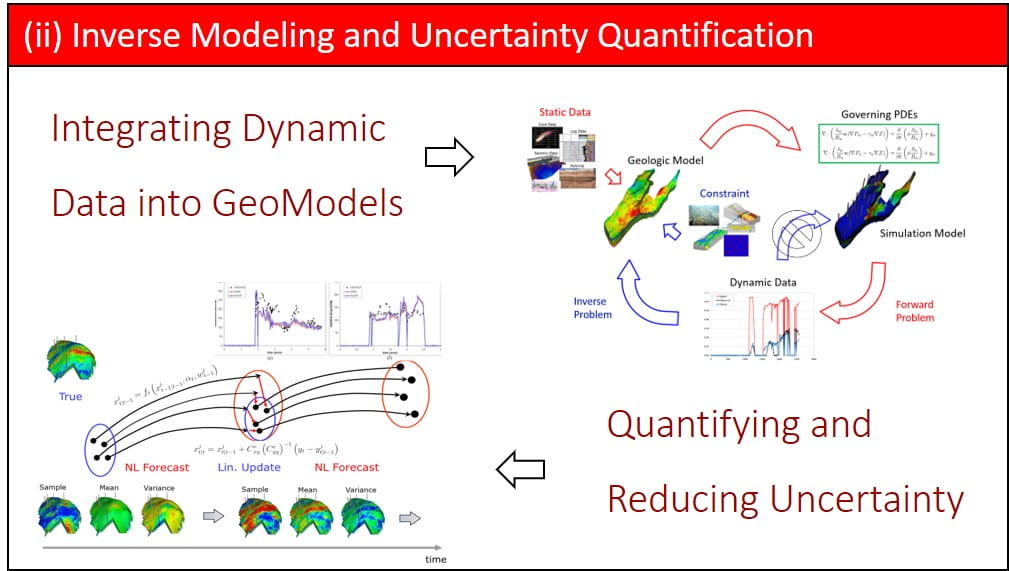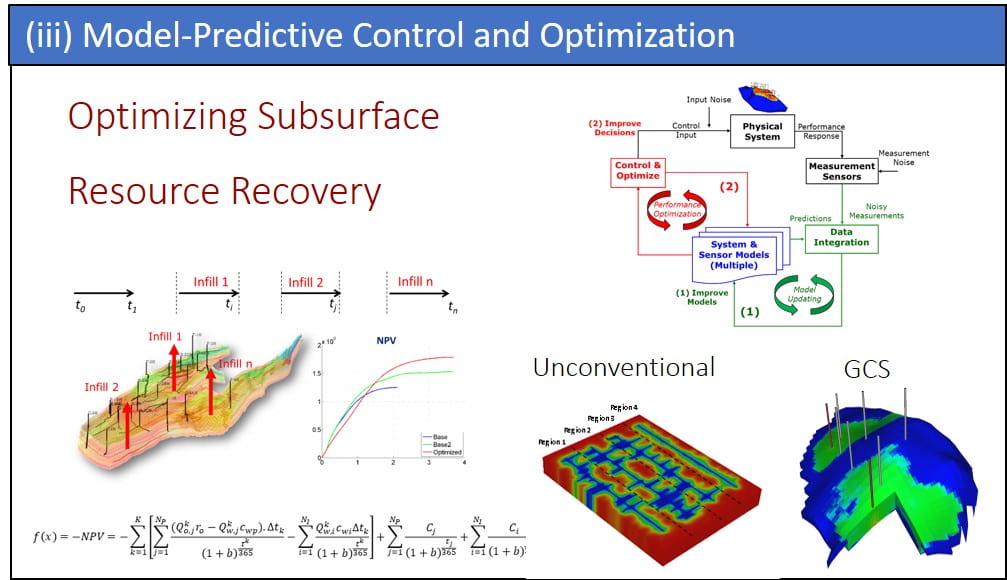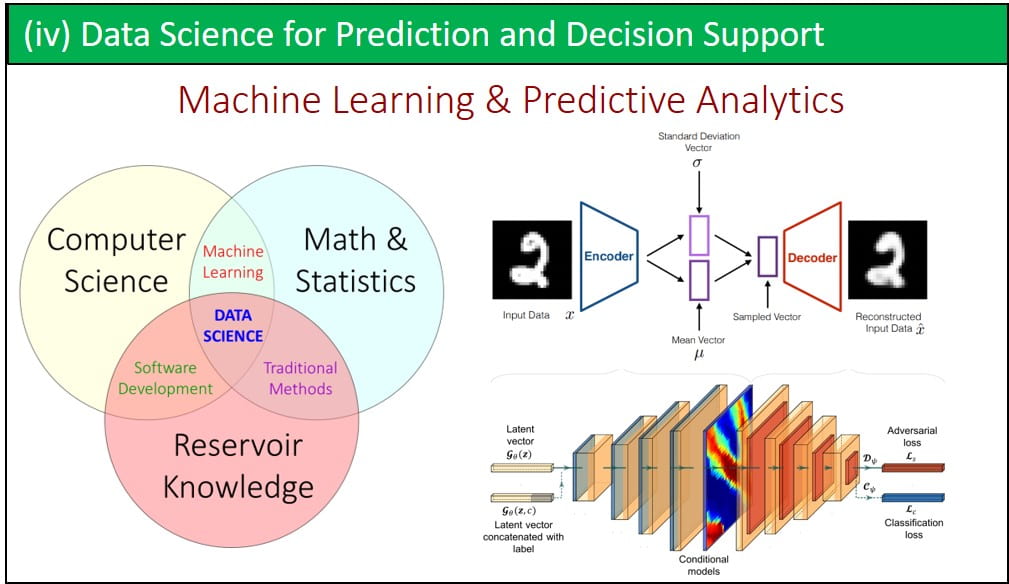Our research focuses on efficient development of subsurface energy, water, and environmental resources. To this end, we develop novel algorithmic solutions to challenging problems concerning the prediction of flow and transport phenomena in complex subterranean environments. A grand challenge in this area is related to accurate representation and simulation of physical and chemical processes that take place in heterogeneous geological formations. A major contributor to this challenge is our inability to see into these formations to better understand their properties and the behavior of the underlying processes. The difficulty in observing these systems introduces significant uncertainty into subsurface modeling, characterization, and flow and transport forecasting, and necessitates proper representation and quantification of uncertainty in modeling them. To address these challenges, at the SEES lab, we integrate advanced mathematical and computational methods, including data science algorithms, with insight about the physics of fluid flow and transport processes in geologic formations.
Our research activities revolve around developing computational and mathematical techniques for (1) effective description and representation of complex geosystems, (2) dynamic characterization and imaging of subsurface flow and transport behavior, with uncertainty quantification and reduction, and (3) efficient development of the underlying energy and natural resources through performance optimization. A recent focus of our lab is on developing domain-specific data science algorithms to accomplish our research objectives in each of these areas.



